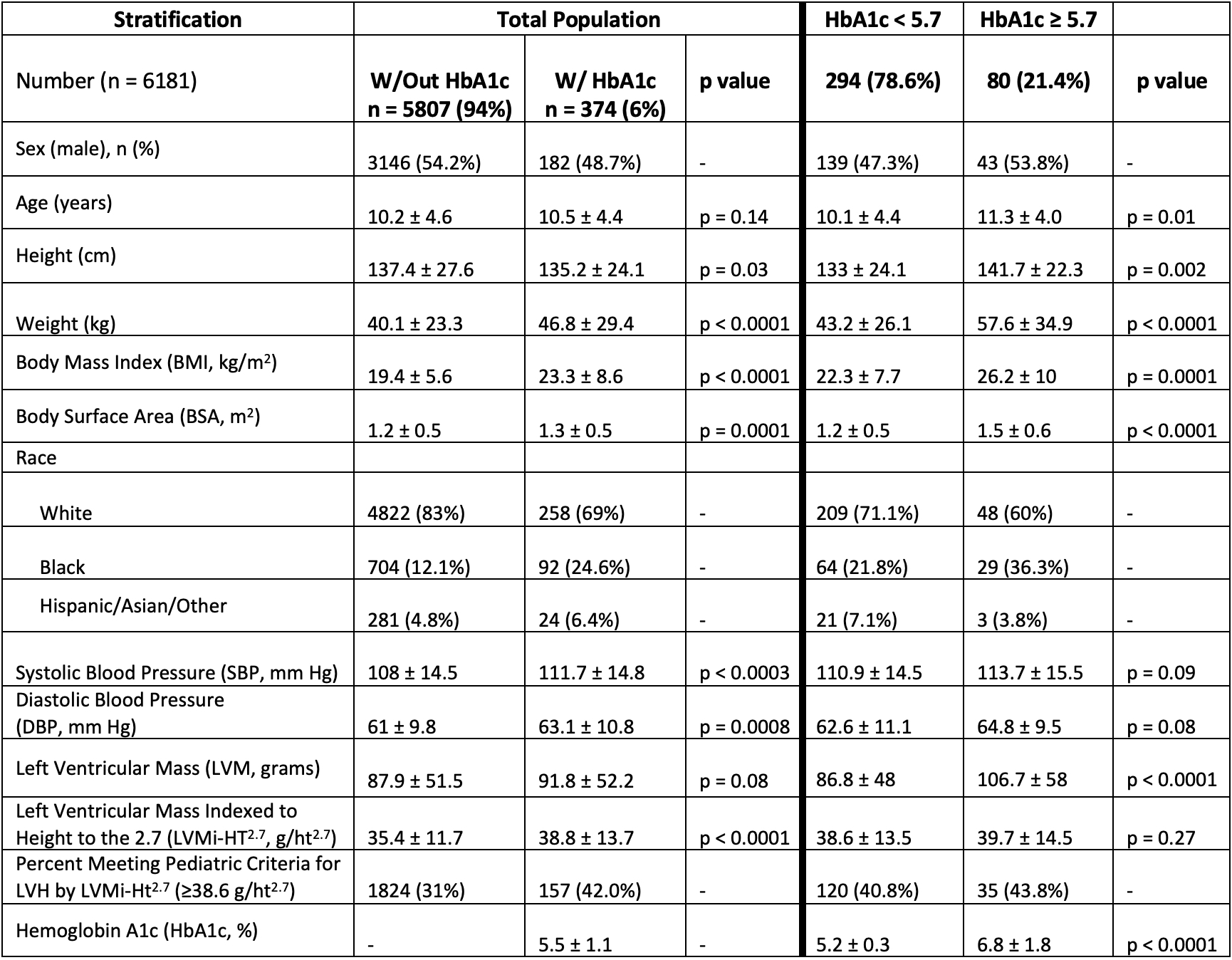Cardiology
Cardiology 3
712 - Characteristics of Congenital Heart Disease Patients with Elevated Hemoglobin A1c
Monday, May 1, 2023
9:30 AM - 11:30 AM ET
Poster Number: 712
Publication Number: 712.4
Publication Number: 712.4
Jonathan A. Wheeler, Nationwide Children's Hospital, Columbus, OH, United States; Phillip S. Cheng, Nationwide Children's Hospital, Columbus, OH, United States; Aaron Walsh, Nationwide Children's Hospital, Columbus, OH, United States; Kan N. Hor, Nationwide Children's Hospital, Columbus, OH, United States; Andrew H. Tran, Nationwide Children's Hospital, Columbus, OH, United States

Jonathan A. Wheeler, MD (he/him/his)
Resident Physician
Nationwide Children's Hospital
Columbus, Ohio, United States
Presenting Author(s)
Background: Pediatric and adolescent congenital heart disease (CHD) patients have inherent increased risk for cardiovascular (CV) disease. Acquired conditions such as elevated Hemoglobin A1c (HbA1c) are known risk factors for adverse CV outcomes in the adult population. With the increasing rates of pediatric prediabetes (HbA1c ≥5.7% to < 6.5%) and diabetes (HbA1c ≥6.5%), data is limited on the prevalence and significance of elevated HbA1c in children with CHD. The presence of elevated HbA1c in this population would potentially increase future CV risk.
Objective: Our study aims to evaluate the prevalence of elevated HbA1c in children with CHD and demographic, anthropometric, and echocardiographic parameter differences between subjects with normal HbA1c and elevated HbA1c.
Design/Methods: Patients with CHD with primary cardiology encounters at Nationwide Children’s Hospital from 2003-2019 were evaluated. Anthropometric, demographic, lab, and echocardiogram data were obtained if available. Subjects with HbA1c values were classified as having normal HbA1c (< 5.7%) or elevated HbA1c (≥5.7%). Left ventricular mass indexed to height2.7 (LVMi-HT2.7) was calculated with left ventricular hypertrophy (LVH) defined as ≥38.6 g/ht2.7. Comparisons were made between groups with and without HbA1c levels and within the HbA1c group (normal versus elevated HbA1c).
Results: In the study population (n=6181), 6% of patients had HbA1c drawn with findings detailed in Table 1. Of those screened, 21.4% had elevated HbA1c. Subjects screened for HbA1c had significantly higher BMI, blood pressure, and LVMi-HT2.7 compared to unscreened subjects (all p< 0.001). Within the HbA1c group, those with elevated HbA1c had significantly higher BMI and left ventricular mass (LVM) compared to the normal HbA1c group (all p< 0.001). The mean HbA1c of the elevated HbA1c group was 6.8 ± 1.8 % which was above diagnostic criteria for diabetes.
Conclusion(s): Children with CHD screened with HbA1c had worse CV risk factors compared to unscreened subjects. For those that were screened, a high proportion had elevated HbA1c. With the increased obesity and elevated LVM in this subgroup, there is suggestion for multiple coinciding CV risk factors with impact on end-organ echocardiogram parameters. In the CHD population already predisposed to increased CV risk, there is need for further study regarding routine assessment of HbA1c as an additional modifiable risk factor.

